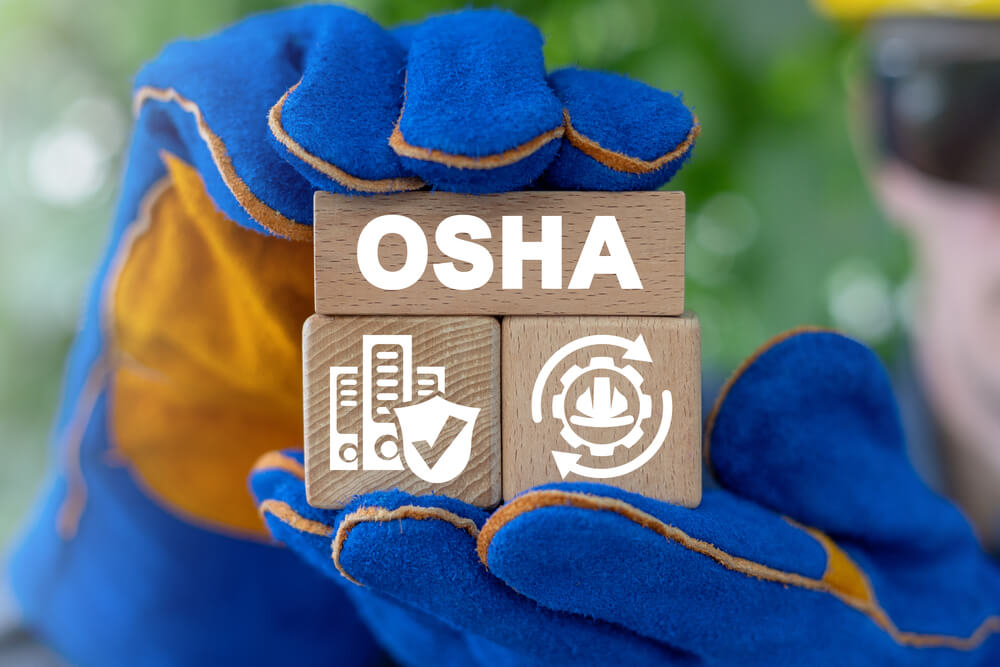- Home /
- The EaseBlog /
- PAGA
The EaseBlog: PAGA

How to Build an OSHA-Proof Safety Plan
Occupational Safety and Health Administration (OSHA) to protect employees and to avoid costly fines and legal actions. Safety planning ensures that risks are minimal, and if a problem does occur, you can demonstrate that you took steps to prevent it.
Here's how you can build an OSHA-proof safety plan from the ground up, ensuring that your business is set to thrive within a safe work environment, and within the confines of OSHA standards.
The Foundations of Secure Workplaces
Every successful safety program starts with a comprehensive safety plan, which serves as the blueprint for all your safety initiatives. Your plan should be meticulously detailed and should encompass all aspects of your organization's operations. When built correctly, it serves as a safeguard for both your employees and your business against financial from workers’ comp or PAGA claims and reputational damage resulting from work-related incidents.
Risk Assessment
Begin by undertaking a thorough risk assessment. This should involve identifying potential hazards within the workplace, evaluating the likelihood and severity of harm that may occur, and outlining control measures to reduce or eliminate these risks. Regular reviews of your risk assessment ensure that workplace safety evolves with your business.
Safety Training
An effective safety training program is crucial. All employees should receive comprehensive training that is tailored to their roles and potential exposure to hazards. Regular safety refreshers and updates on new safety policies or equipment are just as important as the initial training.
Regular Inspections
Scheduled and impromptu inspections should become routine. These checks ensure the physical safety of your workplace and cultivate an environment of continuous improvement and vigilance. Promptly addressing any issues flagged during inspections can prevent accidents and reduce legal liabilities.
Personal Protective Equipment (PPE)
PPE should be available and used effectively in areas where workplace hazards cannot be adequately controlled by other means. PPE selection, maintenance, and training are crucial aspects of your overall safety program.
Emergency Preparedness
Establishing and maintaining an emergency response program ensures your staff is prepared for any scenario and will jump into action to prevent further damage. This includes developing, practicing, and regularly reviewing emergency procedures for the entire organization. From fire drills to medical responses, thorough planning is key to swift and effective actions in a crisis.
Record Keeping
Maintaining meticulous records is a significant tool in your safety arsenal. This documentation is not only a regulatory requirement, but it also serves as tangible evidence of your commitment to safety measures in the event of an OSHA audit or legal dispute.
Engage Employees
Fostering a culture of safety requires the active participation of all employees. Regular safety meetings, visible leadership commitment, and a feedback loop for employee input are crucial for maintaining a safe work environment.
Stay Informed
OSHA regulations are dynamic and can change each year. Businesses must stay updated on new rules, regulations, and best practices to remain compliant and to ensure that their safety plan evolves with new knowledge.

Transforming These Concepts into Action
Understanding the components of a solid safety plan is only the first step. Now you must translate these theories into practical measures that can be implemented and sustained within your organization's day-to-day operations.
Develop a Safety Committee
Through collaboration, a safety committee can be a powerful force for program development. This group should include representatives from different levels and departments within your organization to ensure comprehensive perspectives are considered.
Customize Based on Your Business
No two businesses are identical when it comes to safety needs. Each industry, and even each individual workplace, will have unique hazards and, therefore, require specific safety protocols. It is essential to tailor your safety plan accordingly.
Training as a Pillar of Culture
Develop and deliver training that is engaging, relevant, and easily accessible. Use a variety of methods and technologies to ensure that learning is both effective and memorable.
Establish Clear Communication Channels
Open and effective lines of communication are critical for reporting and addressing safety concerns. Employees should be aware of how, when, and where to report issues without fear of retribution.
Routine Safety Audits
Conduct regular and comprehensive audits of all safety aspects of your operation. Use these as opportunities to reinforce the importance of safety with your team and to rectify any problems before they escalate.
Regular Updates on Emergency Plans
Emergencies are unpredictable, but the response to them should not be. Keep emergency response plans current and ensure that all employees are familiar with their roles and responsibilities during a crisis.
Leveraging Technology
Technology can streamline administrative tasks and help ensure that safety procedures are being followed correctly. Safety management software can be used to schedule and track training, inspections, and incidents, as well as store necessary documentation in a convenient and accessible way.
Compile in a Handbook for Reference
A comprehensively detailed safety handbook is an indispensable component of your overall safety program. It provides employees with a centralized reference point for all safety procedures and policies, including OSHA requirements, and serves as evidence of your commitment to a safe work environment.
PEO Support for OSHA Regulations
Navigating OSHA regulations requires a specialized understanding of safety standards and best practices. For small business owners, keeping up with changing regulations can be a significant challenge. Professional Employer Organizations (PEOs) can provide the necessary support and expertise to create and maintain an OSHA-proof safety plan.
By partnering with a PEO, you gain access to a team of professionals dedicated to managing HR functions, staying current on OSHA regulations, and keeping your workplace safe. Whether it’s risk assessments, safety training, or record-keeping, a PEO can offer the resources and guidance necessary to ensure compliance and promote a culture of safety.
Remember, when it comes to OSHA, ignorance is not bliss. In the realm of workplace safety, proactive preparation is the ultimate defense. Build, implement, and continually refine your OSHA-proof safety plan, and you’ll not only minimize risks and enhance employee morale, but you’ll also position your company to endure the relentless tides of regulatory scrutiny. The time and investment in safety are never wasted—in fact, they are critical to your business’s survival and prosperity.
Blog Categories
- PEO (20)
- Employees & Culture (13)
- HR Outsourcing (7)
- Risk Management (7)
- Human Resources (6)
- Workers' Comp (6)
- Compliance (5)
- PAGA (4)
- Payroll (4)
- Benefits (3)
- Flexible Spending Account (3)
- Podcasts (3)
- Diversity (2)
- HR technology (2)
- Training (2)
- ASO (1)
- Healthcare Savings Account (1)
- Inclusion (1)
- Legal Updates (1)
- PTO (1)
- SB 553 (1)
- Special Districts (1)
- recruiters (1)
- staffing (1)
Subscribe Here!
Let us help streamline the way you manage HR.

Subscribe for our the latest news and legal updates that will affect your business.
Newsletter Sign Up
Contact Us
Get in touch with us today.




